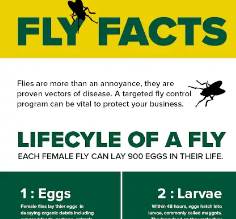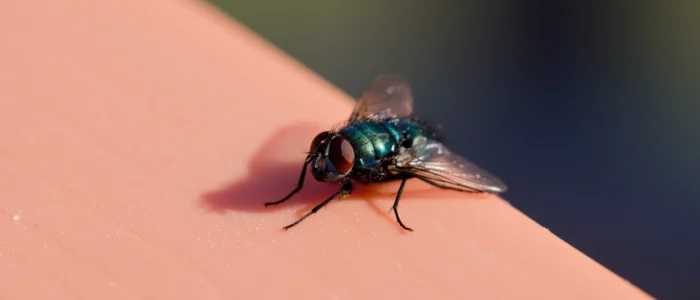Protecting Residents from Disease-Carrying Pests
In long-term care facilities, resident safety and cleanliness go hand in hand. But one common issue often slips under the radar: flies. These disease-carrying insects thrive in warm, humid environments like those found throughout North and South Carolina. For care home administrators and healthcare facility managers, fly control is not just a comfort issue; it is a health and compliance priority. In healthcare pest control, even one overlooked fly can lead to violations or outbreaks.
Tools such as LED fly lights and bioremediation drain services offer practical, facility-wide solutions that reduce fly activity without disrupting care routines.
Why Flies Are a Risk in Healthcare Settings
Flies are known to carry bacteria such as Salmonella and E. coli, easily transferring pathogens from contaminated surfaces to food, utensils, and hands. In long-term care settings, where residents often have weakened immune systems, even minor contamination can escalate into serious illness, making it crucial to control fly populations before they spread disease.
Adult flies are drawn to organic waste, sugary spills, feces, and standing water. They lay eggs in drains, waste bins, or damp, dark corners that daily cleaning may not reach.Within a matter of days, the eggs hatch and the larvae quickly multiply, creating larger infestations if not controlled.
The fast life cycle of flies (as little as 10 days) means that infestations can escalate rapidly. A few flies today can quickly turn into a much larger problem tomorrow, spreading contamination throughout your facility. Without proper control, these infestations can affect high-risk areas such as kitchens, dining rooms, and even patient rooms, directly impacting the health and safety of residents.
This is why many healthcare teams now include drain line treatment and fly monitoring as part of their ongoing sanitation plans, helping to proactively address potential breeding grounds and ensure that fly populations are kept under control before they can spread.
Where Fly Infestations Begin Indoors
In 24-hour care environments, opportunities for fly activity are hard to avoid. Common breeding sites include:
- Overflowing or infrequently emptied waste bins
- Dirty mop closets or wet mop heads
- Clogged or slow-moving floor drains
- Food waste in resident kitchens or staff lounges
- Gaps in door sweeps, window screens, or pipe penetrations
A fly’s life cycle can complete in as little as ten days. That means even short lapses in sanitation or maintenance can allow fly populations to take hold.
Consequences for Compliance and Resident Safety
Even a few flies can trigger bigger problems. In long-term care, their presence can lead to:
- Contamination in kitchens or resident dining rooms
- Increased risk of health-acquired infections (HAIs)
- Complaints from visitors, staff, or resident families
- Failed inspections or citations during audits
In the eyes of inspectors and families, flies can raise doubts about a facility’s hygiene standards. When overlooked, they affect more than compliance, they erode trust.

Fly Lifecycle Infographic
For a visual guide on the fly lifecycle, entry pathways, and control strategies in pharmaceutical facilities, download our Fly Lifecycle Infographic.
Download NowHow to Address Breeding Grounds Effectively
Even well-kept care facilities can have fly issues hiding in unexpected places. This is where an integrated fly control approach becomes critical.
Here are proven tactics that long-term care managers are using:
- Install discreet LED fly lights – in food service areas, break rooms, and waste disposal zones. These lights capture flies efficiently, without disrupting the care environment
- Use bioremediation – to clean drains and break down organic buildup, a method that reduces the risk of flies breeding in hidden areas like floor drains
- Seal common entry points – including baseboard gaps, door frames, and HVAC access points. This simple measure prevents flies from gaining access to the facility
- Review sanitation schedules – with cleaning staff, ensuring that less-visible risk areas such as elevator pits, loading docks, and utility rooms are adequately addressed
Even small changes, such as removing trash more frequently or installing a discreet fly trap, can have a big impact on resident comfort and staff well-being.
Support for Carolina-Based Healthcare Teams
With decades of experience in the Carolinas, Gregory Pest Control has worked with long-term care and healthcare facilities to address complex pest management issues. Our expertise in healthcare pest control helps facility managers maintain a clean, compliant, and safe environment.
Our specialized knowledge of fly behavior, combined with proactive strategies, ensures that we tackle problems at the source, reducing risk and preventing recurring issues. Facility managers in healthcare environments trust our team for thorough site evaluations, customized fly control recommendations, and ongoing pest monitoring to support infection control measures and resident safety.
By addressing fly risks early, you prevent disruptions to both your operations and your residents’ well-being. Partnering with experienced pest control professionals ensures the safety of your facility, from kitchens to patient rooms, while meeting compliance standards.
Don’t wait for fly infestations to escalate. Contact us today to schedule a comprehensive fly control assessment and get tailored recommendations for your facility.

